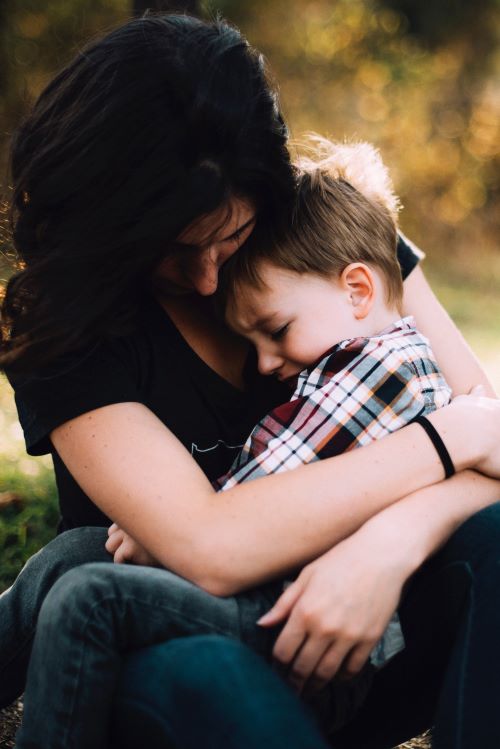
Reframe how you and your children process feelings to help develop healthy emotional agility.
Many people approach their emotional well-being as a zero-sum game. They get it into their heads that the goal is never to feel bad, ever. No bad days, no frustrations, no negative thoughts. If they feel anger, sadness or anxiety at any point in the day, it feels like a failure. That feeling of failure compounds the negativity into a downward spiral, and the day may be shot.
This is especially the case for children and their parents. While children remain admirably resilient, they lack the coping skills to manage big emotions, a trait that can be debilitating if carried into adulthood. Their parents, meanwhile, face an even steeper rollercoaster. No joy is more joyful, no fear and anger more rancid than the joy, fear and anger a parent feels in relation to his or her child.
Holding an umbrella in this storm is Dr. Susan David, author of “Emotional Agility,” in the form of a helpful reframe parents can use to approach tumultuous circumstances.
The fight to never feel bad is a losing fight. Everyone has their ups and downs in life, and it is natural to feel anger, fear, shame, regret, remorse, distress and bitterness. Stoically keeping these emotions at bay, denying their very existence, only makes it worse.
By contrast, emotional agility is the ability to face life’s ups and downs with an open mind. Like a football player light on his feet, dodging unpredictable opponents to reach the end zone, those emotionally agile navigate their way through negative emotions, as well as positive emotions, with clear eyes and a baseline of self-acceptance.
Anger, sadness, fear … these are no longer failures for the emotionally agile parent or child. They are teachers, friends to be listened to, taken at face value, and discarded in good time.
How does one practice emotional agility, like a football team practices physical agility? Dr. David outlines four steps to train emotional agility:
- 1. Show Up
- 2. Step Out
- 3. Walk Your Why
- 4. Move On
At each step, note the importance of mindfulness — the moment-by-moment awareness and curiosity about our thoughts, bodily sensations, emotions and surroundings. Mindfulness is a key state, trait and practice in the development of emotional agility. If you have been practicing mindfulness, you may feel right at home in the four steps to emotional agility.
- Step 1: Showing Up — “Thinking positive” is not the answer. The negative thoughts and feelings are there. Ignoring them only makes them stronger. Do not avoid your thoughts and feelings, even the negative ones. They are part of you and facing them is the only way to turn them from enemies into friends. In accordance with the principles of mindfulness, approach your negative feelings with curiosity, a burning desire to see them for what they are, learn from them and learn about yours.
- Step 2: Stepping Out — Again, following the principles of mindfulness, “stepping out” is not about denying your negative emotions, but about detaching yourself from them. “Stepping out” is the act of leaving the echo-chamber of your self-talk to see the emotions for what they are. They are part of you, but they are not you. They are not essential to your being, nor do they seal your doom. They are just emotions, to be managed and kept in perspective.
- Step 3: Walking Your Why — Finding your “why” in life is the most important thing you could possibly do for yourself. Having a clear understanding of your why is finding purpose in your life, and that is more powerful than any material reward, verbal praise or passion. Knowing your why in life is to give yourself a direction in life, and that direction provides confidence when you make decisions.
Emotions come and go, but the “why” of your life is set in stone. Your “why” is the bedrock of values that order your life and fuel your sense of self-worth. By showing up and stepping out, you have a choice in how you manage your emotions. The best way to positively resolve them is to manage them in accordance with your “why.”
- Step 4: Moving On — Once you have managed your emotions in alignment with your “why,” it is time to let them go. Do not hang on to the emotions — only the actionable lessons you learned by showing up, stepping out and managing them proportionately.
How Parents Can Practice Emotional Agility
Raising children is an emotional rollercoaster like no other. If anyone needs to cultivate agile emotional responses, it is parents. Here are some essential mindfulness practices to train emotional agility:
- Notice negative thoughts. Acknowledge those thoughts of doom. “I am a bad parent”; “I am messing up my kids” — are not productive.
- Challenge negative thoughts. Once you notice negative thoughts, challenge them objectively. Clearly, you are not the worst parent in history. Practice putting your panicked thoughts into perspective.
- Look for the lesson. Your negative thoughts may have things to teach you. Address them with curiosity and look for actionable improvement steps.
- Change your focus. Take a walk or engage in some physical activity. Perform breathing exercises or meditate. Relocate your focus to the sensations in your body.
- Practice gratitude. Do not avoid negative feelings, but mix them with gratitude. Remind yourself of your strengths. Write stories of your successes or recent positive experiences in a journal.
How Parents Can Instill Emotional Agility in Their Children
Emotional agility is one of the best gifts you can give your child. Every parent feels the pain of a parent whose child is experiencing a meltdown, usually in a public place, because the child does not know how to manage his or her emotions.
Children can bounce back from meltdowns quickly — sobbing one minute, laughing the next. The sad fact is, many children carry this emotional overwhelm into adulthood, but they do not carry the ability to bounce back. They meltdown in the face of hardship, but the meltdown consumes days, weeks, months or years.
There is no age too young to foster emotional agility. Parents can lay the groundwork by being mindful not only of their children but also of their own responses to their children’s emotions, making the following adjustments where necessary:
- Feel all the feels. Many parents reflexively encourage a sad or angry child to “cheer up!” It is easy, right? They have no bills to pay. But it is not that simple. Demanding different emotions from your children teaches them to make antagonists out of their negative feelings — a fight no one can win.
Instead, when your child is angry, sad or anxious, show up for them. Talk to them about it. Find out what it feels like in their body. Give them permission to feel the feelings without fear or judgment.
Most of all, encourage them to show their emotions instead of bottling them up. All feelings are welcome because welcome feelings can be coped with.
- Name the feels. To non-parents, a crying child is a crying child. But parents learn to recognize hungry cries, angry cries, cries of grief and cries of fear. Help your children understand the difference too. Emotions are less scary when they can be named.
Explain to them what anger is, what panic is, what sadness is. Point out that you feel these feelings too, and they are never alone or unwelcome in their feelings.
- Let them pass. Explain to your child that while the feelings are valid, they will pass. It is something to be excited about and look forward to, a fact that makes the emotions much less overwhelming.
If you already practice mindfulness, emotional agility is an excellent practice to incorporate into your mindfulness discipline. If you are new to both mindfulness and emotional agility, they are great disciplines to develop hand in hand, preparing you and your children to react with grace when life tries to tackle you.
Anthony Cupo is a trained mindfulness facilitator (TMF) from the UCLA Semel Institute for Neuroscience and Human Behavior. He is a co-owner of Stepping Forward Counseling Center, LLC and has been meditating for over 30 years.
Related Posts:
- Developing Skills for Mindful Parenting
- Safe Family Fun Activities During a Summer Pandemic
- Dad Skills
- How to De-stress in a Crisis
(Photo courtesy of Jordan Whitt/Unsplash)









Leave a Reply